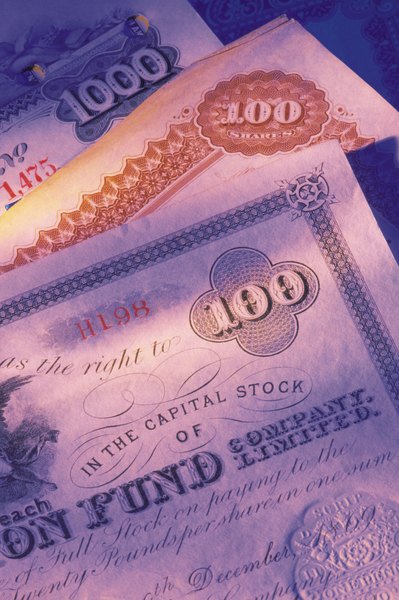How to Find Ex-Dividend Dates of Stocks
Find out if your shares entitle you to the next dividend payment.
Comstock/Comstock/Getty Images
Dividend dates are the days stock and mutual fund shareholders look forward to, as companies make their dividend payments. You’ll receive notification from the company when it declares a dividend, generally via the mail. However, it’s essential to stay aware of the ex-dividend date when you are buying or selling a stock, because that’s the date determining whether or not you qualify to receive the dividend.
You won’t receive the dividend if you purchase the stock after the ex-dividend date. You will receive the dividend if purchasing stock at least one business day prior to the ex-dividend date.
Ex-Dividend Date Example
The ex-dividend date calendar is fairly standard. As an example, a company may declare a dividend on March 8. The ex-dividend date is a week later, on March 15. The ex-dividend date is usually two business days before the record date, but holidays and weekends are excluded.
In this case, because our ex-dividend date falls on a Friday, the record date is on Monday, or March 18 in this example. The date the dividend is actually payable doesn’t occur until April 3. As a rule, the ex-dividend and payment dates are three weeks to a month apart.
Special Rules for Significant Dividends
As the U.S. Securities and Exchange Commission (SEC) points out, when a company pays out a “significant” dividend, the price of the stock may fall by that amount on the dividend date. Special rules apply if the dividend is 25 percent or more of the stock value. When the dividend percentage is that high, the ex-dividend date is deferred until the day after the dividend is paid. If using the example above for a stock paying 25 percent or more in a dividend, the ex-dividend date would fall on April 4.
Stock vs. Cash Dividends
In some situations, the company does not pay a cash dividend, but pays out the dividend in stock. That may include additional shares in the current company, or subsidiary shares if the company is spinning off part of the company to a new entity.
When a company pays stock instead of cash dividends, the ex-dividend date changes. In these cases, the ex-dividend date occurs on the first business day after paying out the stock dividend. The ex-dividend date for stock dividends is after the record date.
Finding the Ex-Dividend Date
If you aren’t a current shareholder and want to find the ex-dividend date for a particular stock, the process isn’t difficult. Most investing websites provide information on upcoming ex-dividend dates. Just type in the company name, or its stock symbol. Once the company information comes up, click the “dividend” tab for the dates.
The ex-dividend will appear among the related dividend data, which includes whether it is preferred stock vs. common stock, the payout date, the amount of the dividend, the current stock price and the yield. You will also see whether the dividend is qualified or ordinary. A qualified dividend enjoys a lower capital gains tax rate than ordinary dividends.
Selling Shares and the Ex-Dividend Date
If you want to sell shares, knowing the ex-dividend date is critical. That’s because selling your shares prior to the ex-dividend date means you won’t receive the dividend. The SEC notes that any sale includes delivery of shares acquired by dividends to the buyer, and as the seller, you will receive a bill from your broker for these dividend shares. Keep in mind if you plan to sell shares that the date you can sell shares without having the buyer receive the dividend is generally the first business day after the dividend is paid, not the first business day post-record date.
References
Resources
Tips
- If a company has recently paid a dividend and has yet to declare its next dividend, a financial website will display the old ex-dividend date until the next dividend announcement.
- A dividend’s distribution, or payment, date typically occurs within a few weeks after the ex-dividend date.
- A stock’s price typically declines by the amount of the upcoming dividend on the ex-dividend date. The stock is worth less on the ex-dividend date because a buyer will not receive the next dividend.
Writer Bio
A graduate of New York University, Jane Meggitt's work has appeared in dozens of publications, including PocketSense, Financial Advisor, Sapling, nj.com and The Nest.

